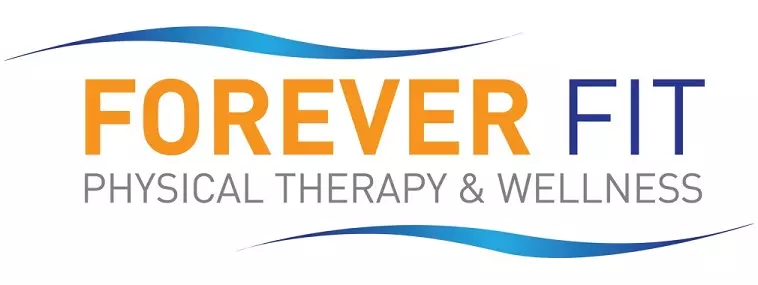Has pain from your shoulder started spreading down the front side of your arm? There’s a good chance you’ve developed biceps tendinitis after a shoulder injury, such as a tear in your rotator cuff or the cartilage around the edge of the shoulder joint. The medical term for this bit of cartilage is the superior labrum anterior to posterior, so this injury is known as a SLAP lesion. Poor posture, weakness in shoulder blade muscles, neck issues and other shoulder injuries can also contribute.
It’s estimated that 95% of people who get primary biceps tendinitis also have a shoulder injury. With a complex injury like this, you should see a physical therapist for an assessment.
This article outlines seven physical therapy treatments they may prescribe as part of your personalized treatment plan for biceps tendinitis.
How can physical therapy help relieve biceps tendinitis?
Your physical therapist will choose a combination of techniques based on the location and severity of your pain and the movements you can perform. Most PT treatments for biceps tendinitis focus on breaking up stiffness in tight areas called trigger points and increasing blood flow to the shoulder and biceps muscles. Fresh blood flow brings healing nutrients and speeds up the body’s natural healing process.
If you’re in a lot of pain, your treatments will begin with more passive techniques that don’t require as much work. Your PT will gradually start to include strengthening exercises as your symptoms improve.
7 physical therapy treatments that can help with biceps tendinitis
The biceps tendon stabilizes the front of your shoulder, and the long head of it runs all the way from your shoulder to your elbow. This is the part that usually gets sore and inflamed with biceps tendinitis. It may happen if you hold your hands above your head and perform rapid movements, for instance, while playing volleyball or working on home maintenance projects. It also gets irritated when you tense your biceps to compensate for shoulder pain.
You can start to manage your pain at home by icing your biceps and using PEACE & LOVE. PEACE stands for protection, elevation, avoiding anti-inflammatories, compression and education. LOVE stands for load (increasing your daily load as your pain allows), optimism, vascularization (moving your body), and exercise.
After an in-depth assessment, your physical therapist will create a personalized treatment plan based on your pain and your ability to move your arm. They may use any of the following physical therapy treatments for biceps tendinitis:
- Dry needling — With dry needling, your PT will use thin, nonmedicated needles to stimulate blood flow in your biceps or shoulder muscles. It’s not the same as acupuncture because it focuses on trigger points within a muscle rather than energy flow.
- Manual therapy — This is a broad term for physical therapy treatments where your PT applies gentle pressure with their hands. They’ll use massage-like movements to mobilize tissue and improve circulation in affected areas, such as a trigger point in your biceps muscle and tendon.
- Instrument-assisted soft tissue mobilization (IASTM) — This treatment mobilizes tissue and stimulates blood flow, much like manual therapy. The difference is that your PT will use a set of stainless steel tools to apply even, precise pressure to your biceps and shoulder.
- Graston Technique® — The Graston Technique is IASTM that uses a particular brand of tools.
- Kinesiology taping — Many professional sports teams use kinesiology taping. With this technique, your PT will use colored fabric adhesive tape to support your biceps muscle and hold it in place.
- Therapeutic exercise — After your pain has improved a bit, your PT will guide you through some exercises to strengthen your rotator cuff and scapular muscles. This can help prevent your shoulder injury and biceps tendinitis from coming back.
- Postural activities — Good posture will be important while you’re healing from biceps tendinitis and in the future. The amount of time you spend on postural activities in PT will depend on what you do at work, school or home during the day. This will also be a bigger part of your treatment if poor posture was a primary cause for your injury. Your PT will show you stretches and exercises you can do throughout your day to maintain better posture.
Find relief for biceps tendinitis at Forever Fit
Having a shoulder injury is painful enough. Biceps tendinitis can make everyday activities, such as driving, working with your hands, typing and gesturing, more difficult. Physical therapy can help reduce your pain and facilitate healing. A comprehensive treatment plan will account for the types of movements you need to perform on a regular basis. It will also build up your strength and flexibility to help prevent your injuries from coming back.
Are you a little skeptical about trying physical therapy? Physical therapists must have a doctorate and/or a master’s degree. Our education covers musculoskeletal and neurogenic pain, biomechanics, and optimal movement patterns. We don’t rely on medications alone to help people manage their pain. At Forever Fit, we educate our patients and work with them to find holistic solutions for lasting relief. Our team is both compassionate and experienced with a wide range of patient groups.
Are you ready to find relief for your biceps tendinitis? Get in touch with us today for more information or to schedule an initial appointment.

